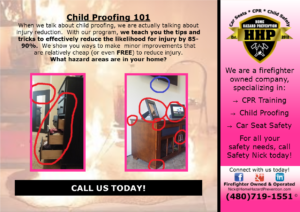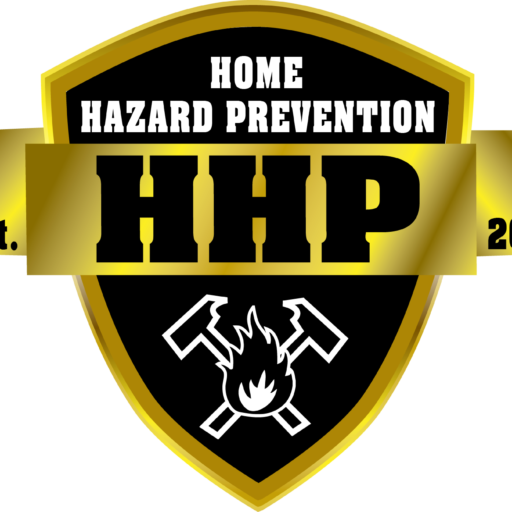Protecting your family always has been and always will be the number one priority on your life. Each year, an unacceptable number of injuries and deaths occur in the privacy of our own homes. A large number of these include a group that often times can’t protect themselves- newborns, infants, and young children. Making a house baby-safe means ensuring that whatever he might try to open, pull on, or play with won’t hurt him. Work on baby proofing by setting aside one weekend to secure your house, room by room, to make it safe. This may take several hours, so let Home Hazard Prevention help you with a customized safety tour that includes fire safety, baby safety, and whole house safety tips. It is best to start baby proofing before your deliver, and to complete baby proofing by the time your child is starting to stand and walk on their own.
Look at the Big Picture First
Please keep in mind that the term ‘Baby/Child Proofing’ should not be taken literally. There is absolutely NO product or company that can 100% baby/childproof your house, no matter what the cost or claims they make. It is impossible to make a home 100% child proof and accident-free. Kids (and adults) have always and will always find a way to injure themselves. Our goal is to identify the ‘danger zones’, and reduce the potential for injury. The idea is to identify the target hazards and implement as many layers of safety as possible to help reduce the likelihood of an injury. We generally are able to help get the injuries reduced by around 85%. Consider generally how safe your entire house is.
Your child can get into trouble in a second, so make sure he reduces his likelihood of injury by addressing all potential accident locations. Some of our top accident avoidance must-haves include:
- Bath faucet covers to protect little heads from hard and sharp bath/sink faucets.
- Door straps to wrap around door edges to prevent slams of little (and big) fingers.
- Corner bumper guards to protect little heads from sharp table and furniture edges.
- Lid locks to keep toilet lids closed when not in use.
- Outlet covers to protect objects from being inserted into the electrical system.
- Door knob locks to help prevent young children from accessing rooms unsupervised, including front doors.
- Cabinet and drawer latches to secure containers and dangerous products from children.
- Childproof medication lock boxes to keep children from ingesting potentially poisonous medications.
- Gates to separate rooms and gate off stairs to help keep an eye on kids as they become increasingly mobile.
- Checking your cribs and bedding materials against an approved source. We like the Juvenile Products Manufactures Association. Click the hyperlink, then go to Consumer, then Keeping Baby Safe.
According to a recent study conducted by the Home Safety Council, children under 1 have the highest rates of unintentional home-injury death of all children under 15, with choking and suffocation topping the list as the biggest hazards.
Contact Home Hazard Prevention today for a complete safety assessment of your house and to get immediate safety tips and recommendations to protect not only your entire family, but your house as well. Safety is mostly about Prevention, Education, and Practice. Help protect your family by understanding the risks and knowing the procedures to take in the event an emergency occurs. We even leave you a brand new, commercial grade portable fire extinguisher, complete with training, to further keep your family safe. A reasonable one time fee can give you a lifetime of safety procedures; knowing that your house was inspected by professional firefighters who offer real world expertise in accident avoidance.


Leave a Reply